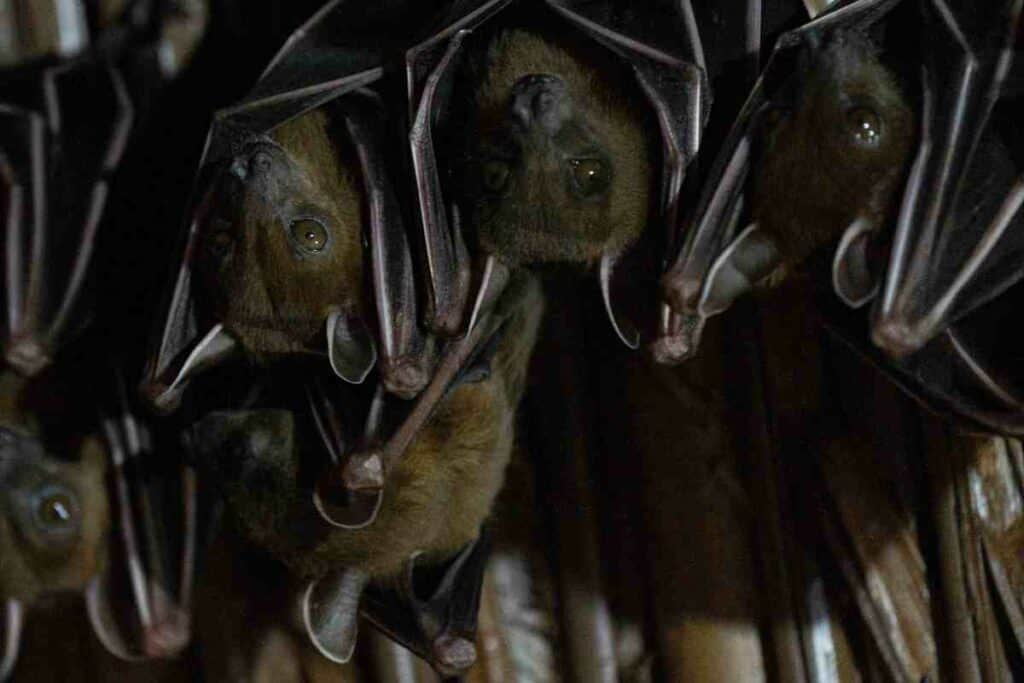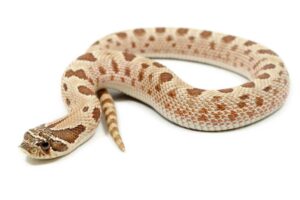Bats are creatures the average person knows little about, even though estimates put the number of bats at nearly one-billion throughout the world.
In fact, bats are the second most-populous mammal in the world, second only to rodents.
While many people don’t realize that bats are mammals, they do indeed fall into that category, so if you’re wondering if bats lay eggs, the answer is “no.”
Just like other mammals, bats reproduce and give birth to their young. Baby bats are even called pups, just like another one of our favorite mammals!

Table of Contents
How Do Bats Reproduce?
In the United States in particular, most bats mate either in the fall or winter time. They mate before they go into hibernation, and most of the time, the females either store the sperm until they ovulate or keep the egg from growing any bigger until the springtime.
In the spring, the actual fertilization takes place, and the gestation period of a female bat can be as little as 40 days or as long as six months.
The females usually gather in large groups, called bat colonies, and give birth together. They then stay with one another to raise their young, which doesn’t take long because bats grow up and go out on their own quickly.
The reason for this timeframe is simple. Compared to other mammals, bats are relatively small. When they come out of hibernation, the males often aren’t as strong or healthy as they are in the fall, which can make mating behaviors rather difficult.
To avoid that, bats simply mate in the fall and the females give birth in the spring.
If they waited until after they came out of hibernation, when food is scarcer and both males and females are weaker, the mating would likely be unsuccessful. By mating in the fall, they do not have to worry about this problem.
In the spring, when food becomes much easier to find, it becomes much easier for the females to keep themselves and their babies properly fed and ready for the birthing process.
Female bats usually give birth either in May or June, with the other female bats in the colony. Since they are mammals, they do not lay eggs but instead give birth to young.

The baby bats are called pups, and yet another part of the reproduction process that is unique among mammals is the number of pups born to the females. Usually, female bats give birth to only one pup per litter, which means they only have one pup a year.
This number can vary somewhat, with some bats giving birth to two or three pups per year and a small number giving birth to four pups a year.
But four is the most that female bats give birth to, and even that number is rare.
Some Interesting Facts About the Birthing Process
Once again, the birthing process is rather unique among bats, and not just in the number of babies they have per year. Female bats will give birth to their young while hanging upside down.
When the pup is born, the mother bat catches the pup then places it inside of her pouch to keep it safe. When food is needed, the mother bat goes out in search of food but the pup stays behind.
The pup will cling to a wall within the roost and wait for her to return. Most often, the mothers will go out in search of food and return to feed their young several times throughout the night.
Many bat species find females coming together to give birth and raise their young. Because of these colonies, the group provides more warmth for the young bats, and the young bats need a lot of warmth in order to develop properly.
The colonies are also beneficial because they provide protection from predators.
Why?
Because when it comes to bats, predators find large numbers of them too distracting to bother with and therefore, they are much more likely to avoid the bats altogether when they are in large groups or colonies.
Can Bats take off from the ground? Finds out here
What Comes Next?
Most baby bats remain in the colony until around mid-summer, so bats do not stay with their mothers for very long. In addition, by the time they leave the colony, they are roughly 95% the size of adult bats, so the average person wouldn’t be able to tell which bats are the adults and which ones are the younger bats.
Bats are also considered to be one of the slowest reproducing mammals in the world because many other mammals give birth to a lot more than one to four babies per year.
In many ways, bats are much like humans, except of course, when it comes to how soon the babies are ready to leave the roost!
Bats also have relatively long lives when compared to many other mammals. The majority of the bats in existence will live for a minimum of 10-14 years, but there are some that live 30-40 years.
The oldest bat, in fact, is thought to have lived a full 41 years. While this seems short when you compare it to a human’s lifespan, keep in mind that no other mammal of their size ever lives for that long.
This is yet one of the many things that makes bats so unique as compared to other mammals.
Conclusion
Many people assume that bats lay eggs because they do not realize that these animals are mammals. But like other mammals, bats reproduce when a female egg is fertilized by male sperm and the females give birth to live young. The gestation period is from 40 days to six months, and the females usually give birth in either May or June.
The baby bats, known as pups, do not stay with their mothers for very long, usually flying away in mid-summer. Mating occurs in the fall or winter months but the females do not give birth until the spring.
Bats also live a long time when compared to other mammals their size, with some living up to 40 years. Bats are indeed interesting creatures when it comes to how they get started in life.










